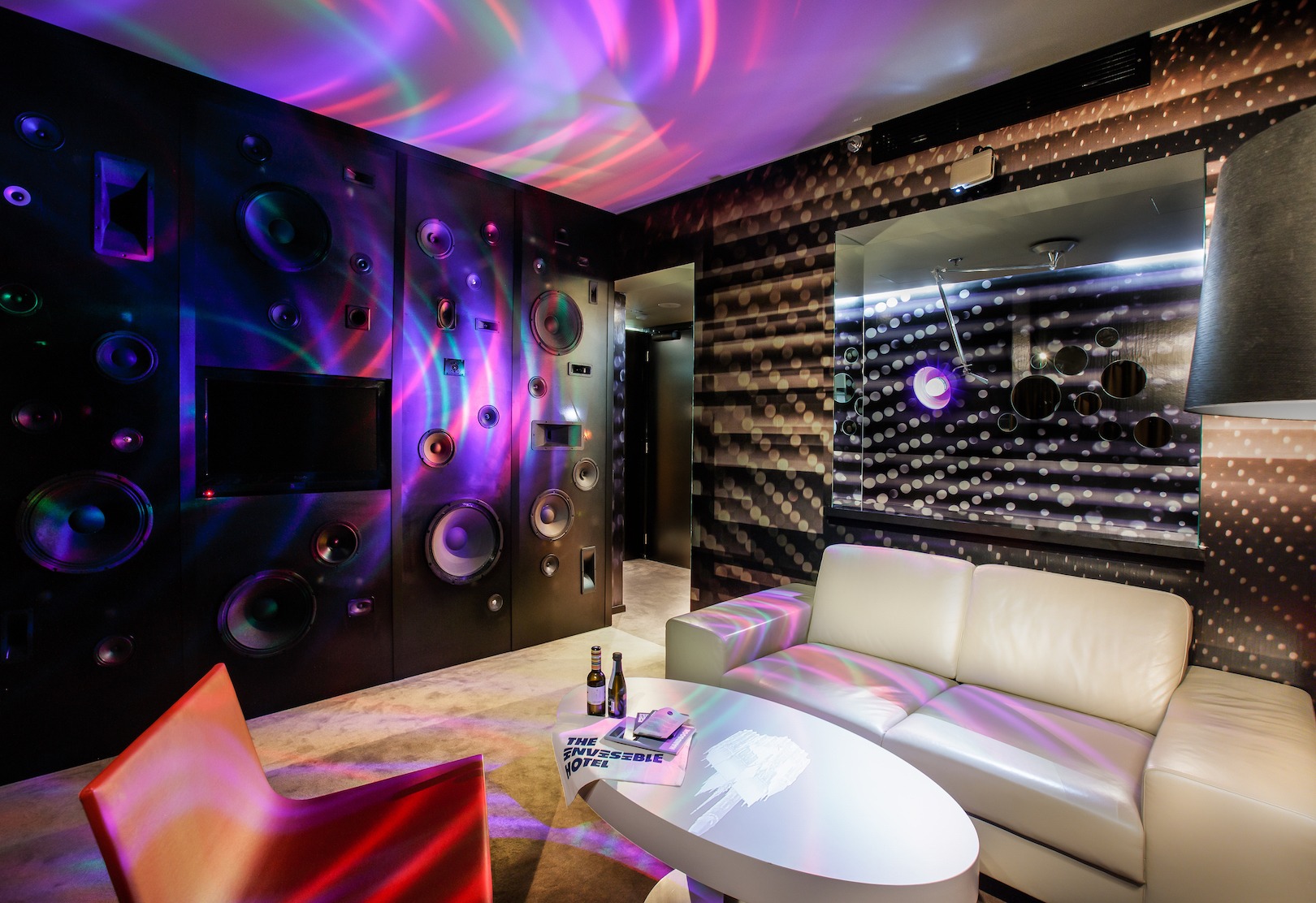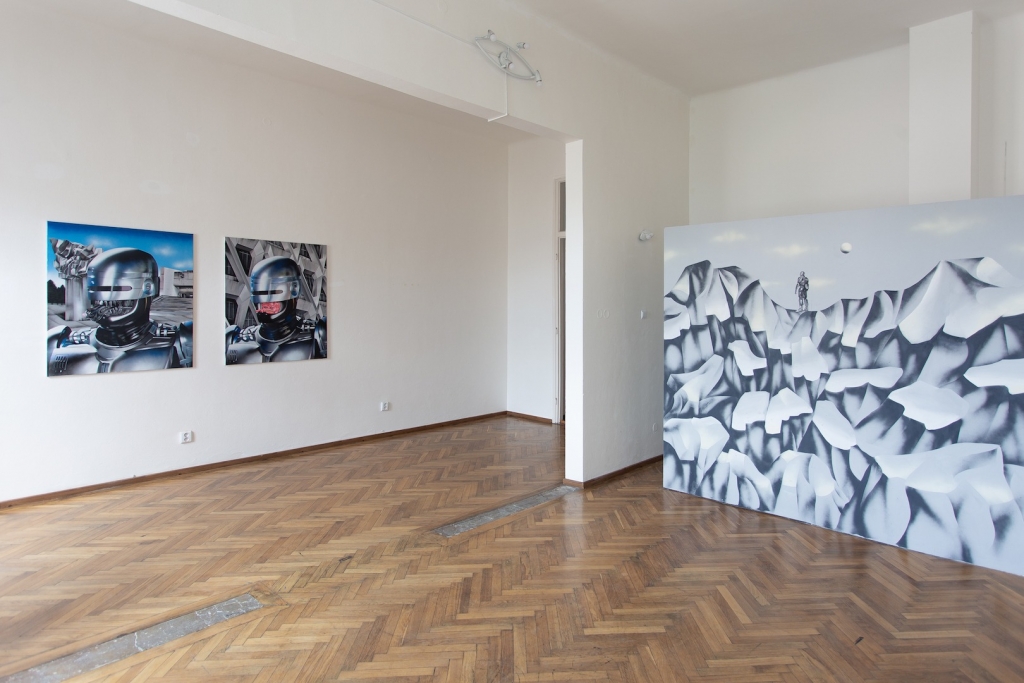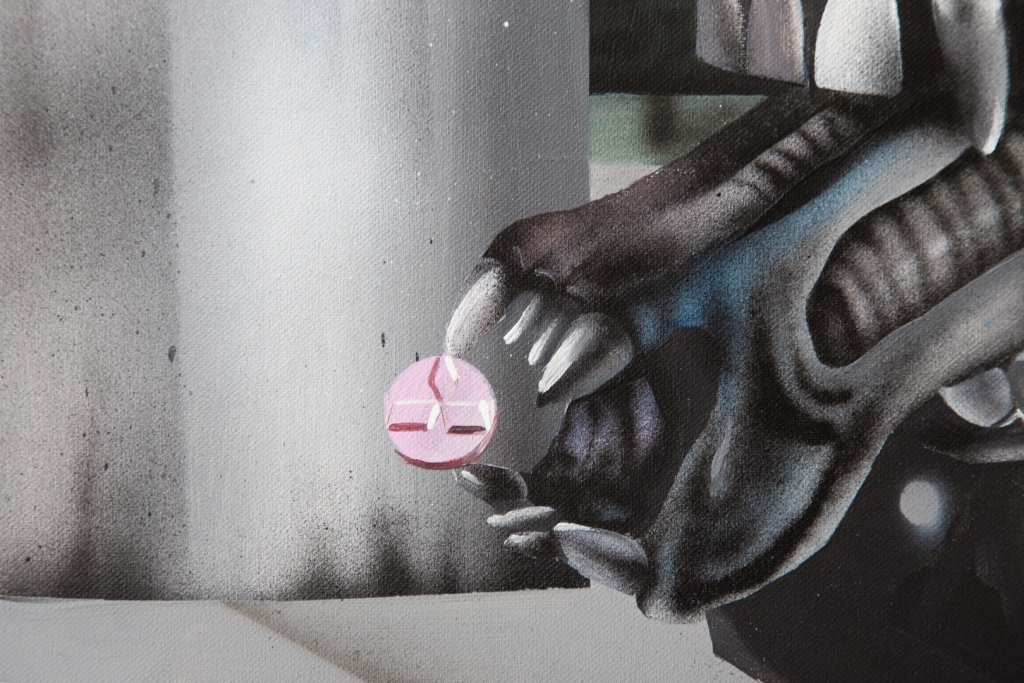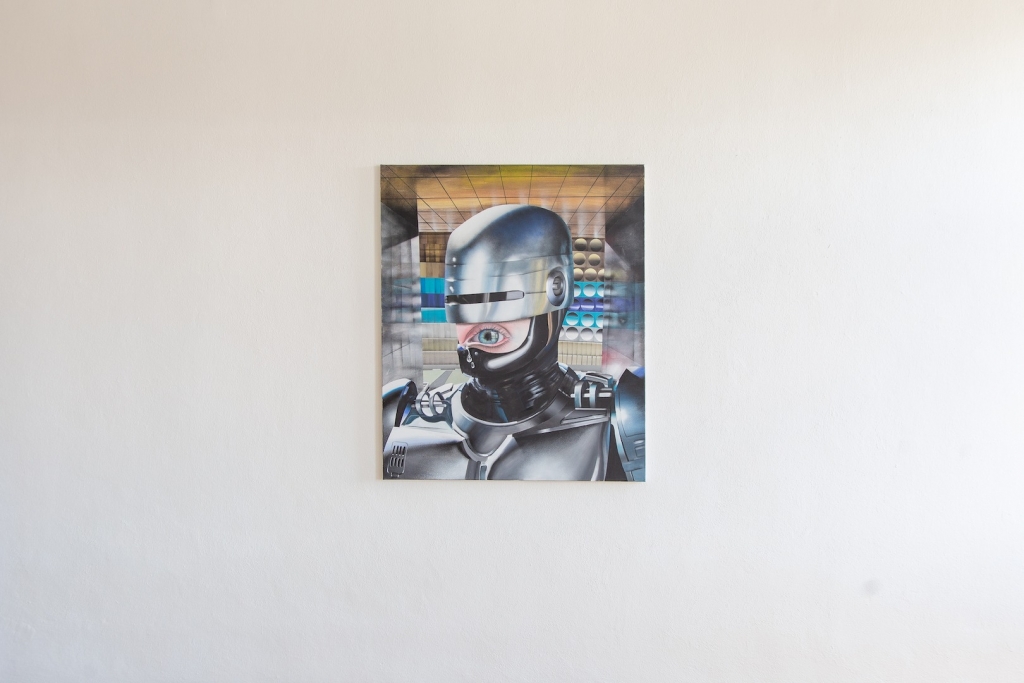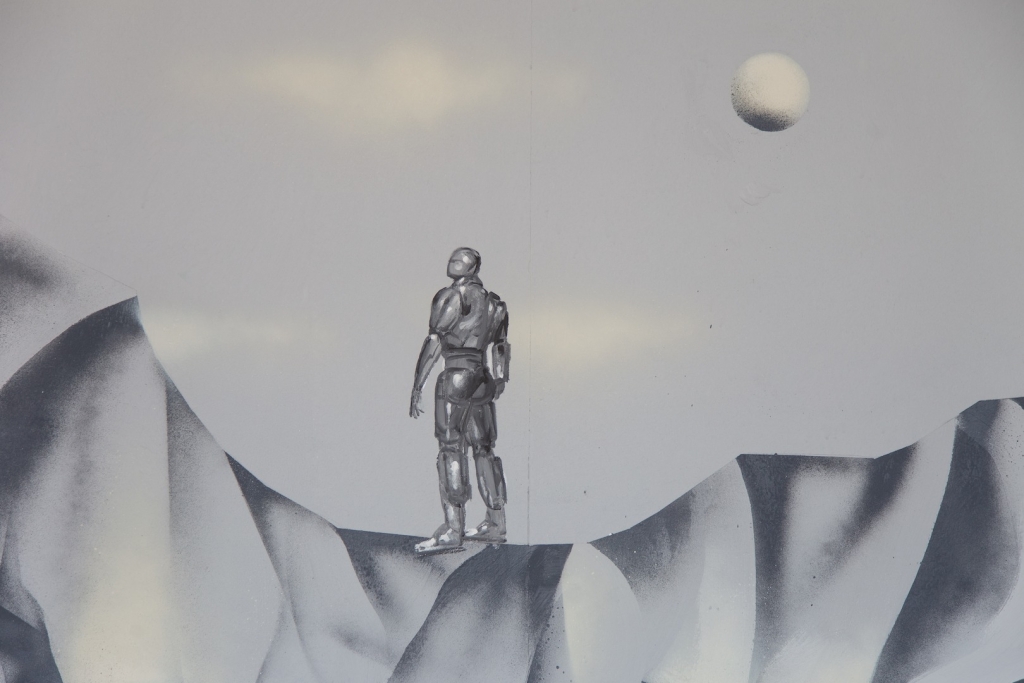Pop & brutalism as a generational confession of Botond Keresztesi
2019 meant closer cooperation with the artistic scene of Budapest for VUNU Gallery. The city is the nearest European metropolitan centre and cultural spot which still offers a wide variety of cool clubs, galleries or other cultural projects despite the political situation in the country. What is more important, however, is the fact that numerous interesting and distinctive artists wanted to collaborate with VUNU Gallery and so created a-before-non-existent connection with such a nearby town (250 km).
The last cycle of these exhibitions was the one presenting the artworks of Botond Keresztesi, curated by Peter Bencze (Everybody Needs Art). Botond Keresztesi is one of the most distinguished young Hungarian painters hence loads of expositions across Europe (e.g. a solo expo in Parisian Derouillon at the time of writing this article). Botond’s root can be traced back to Romania – he had moved to Budapest as a child with his family and lived and painted there ever since).
His pieces are typical for their implementation of the painting medium – banal, often known and industrial motifs are depicted. The contrast of 2D layers with 3D objects. Botond seems heavily influenced by early Hungarian avant-garde painting and artistic posters from the 1940s (Sándor Bortnyik – Košice Modernism period), analytical cubism, even advertising sphere and pop culture of 1980s. He is also interested in the aesthetics of the virtual world of the Internet, whether it’s stock photography or pictures rendered into 3D – the practice which he frequently inlays into forms of his paintings. For the exhibition that was to be seen in Košice, called as R.P.G. (all Botond’s expositions carry the same name formed through 3 letters which are also an acronym) as shortened for Robocop Paint Grisaille, the artist prepared a series of paintings with the same motif of Robocop, an invincible cyborg of the successful sci-fi movie from 1987. This year also matches the birth year of the painter. Besides Robocop, there are other pop-culture depictions presented from Botond’s early childhood and symbols important for the clash of the 1980s and 1990s era.
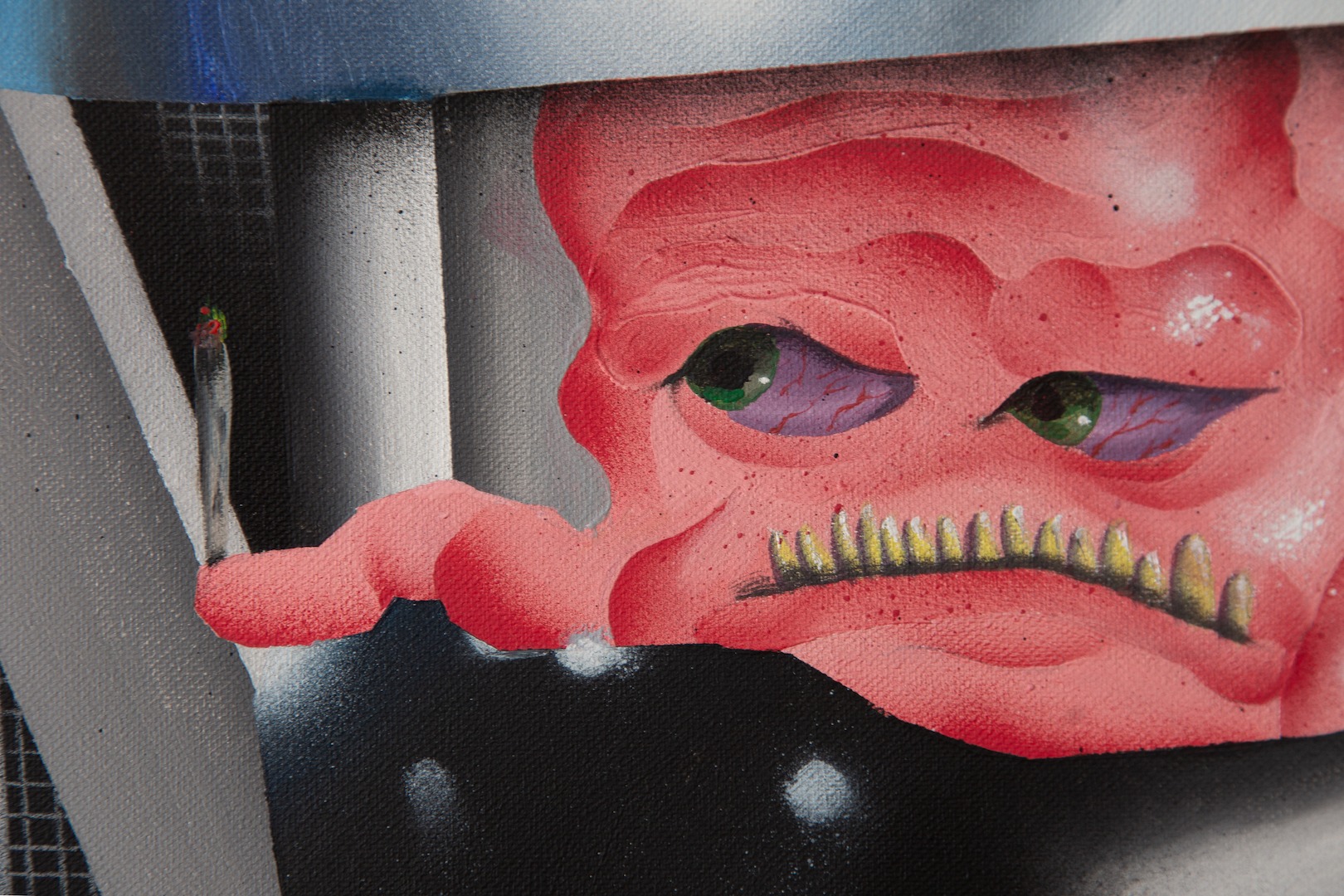
One of the paintings illustrates the head of Krang, a villain known from the famous comic and series Ninja turtles. Another picture, on the other hand, shows a drug pill Mitsubishi held inside a robotic hand which is also very typical for the late 90s dance rave period. Apart from pop-culture representations, Botond has inserted brutalist architecture and its features found in Europe into his paintings within this exhibition for VUNU Gallery. The fundamental emphasis on concrete, monumentalism and weight is presented.
Read more on this topic in 5 invisible spots in Košice by Vladimír 518

Even though these may not be the most attractive buildings to look at, they symbolize the beauty of the era and after-war modernistic period through its epic character. One of these buildings which Botond put into his paintings is a unique Palace of Art in Piešťany by a Slovak architect Ferdinand Milučký. Óda na radosť sculpture by Emil Vankov stands still and calm in front of its colossal staircase.
When in Košice, Botond Keresztesi stayed in one of the design rooms by The Invisible Hotel, named Media Art Room with an excellent selection of free products and tickets. Book the same.
